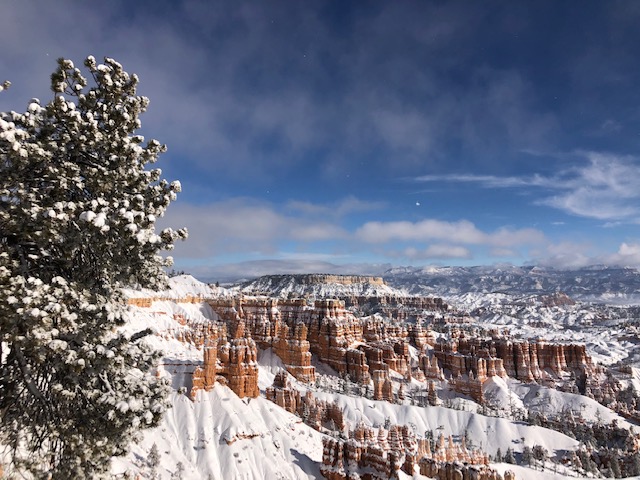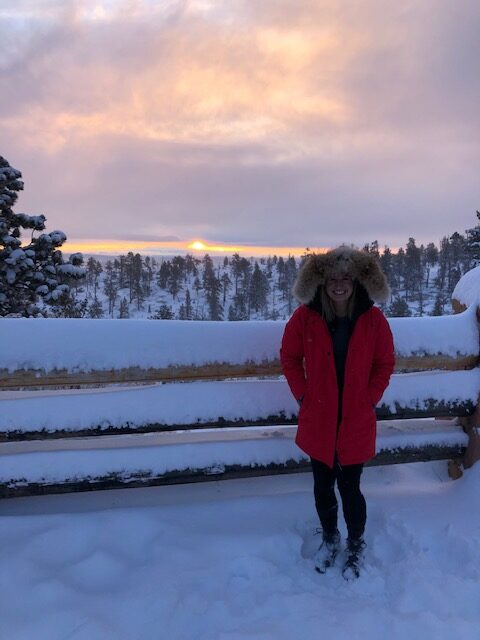Eight reasons why November – February is a fantastic time to travel to Utah (with a suggested side trip to Arizona).
- Less People
Utah’s national parks are some of the most popular in the country. For example: half a million people visit Zion every month from June-September. In the winter, it’s closer to 150K people a month. This means less traffic and more parking spaces. Rental equipment, bikes and kayaks are always available. In addition, there’s no need to book anything in advance so you can be flexible with plans. Winter offers a hassle free, more enjoyable experience. - Sleeping In
You don’t have to get up at the crack of dawn to beat the rush. Instead there is plenty of room for all winter visitors. The sun also rises after 7am, leaving you more time to sleep and enjoy a hearty breakfast, even if you want to catch the sunrise. - Lotteries and special permits
Several parks have opportunities for full moon walks, backcountry hiking or climbing/canyoneering. However, you have to enter a lottery system to win or purchase a permit. Your chances for being accepted skyrocket in the winter. Nearby, “The Wave” at Coyote Buttes North or rafting in the Grand Canyon also accept lottery applications. - Better Deals
Hotels, rental equipment and activities are less expensive in the off season. There’s even a chance you can get a decently priced room at the coveted Zion Lodge if you book ahead of time. - Superior Photos
In the warmer months, it’s impossible to get a photo by yourself at the popular attractions. The winter season offers a chance to get that once-in-a-lifetime shot without anyone in the background. - You can drive through Zion!
Only in the months of December through February can you drive your own car through the park, providing more freedom to explore at your own time and pace. Otherwise you have to take the shuttle. - It’s not suffocatingly hot
The heat can be unbearable in the summer, especially if you are hiking or out in the sun all day. At Arches National Park, the average July temperature is 97 and there is very little shade. On the other hand, winter hiking is refreshing and there’s no chance of heat stroke. - Snow adds a magical touch
You will be awestruck if you are fortunate enough to see a national park after a snowstorm. The white dusting in contrast with the red rocks is absolutely breathtaking. A desert oasis can transform into a winter wonderland.
Yes, it is cold in the winter but don’t let that discourage you. Bundle up and buy hand warmers! For inspiration, check out my 10 day road trip itinerary.



